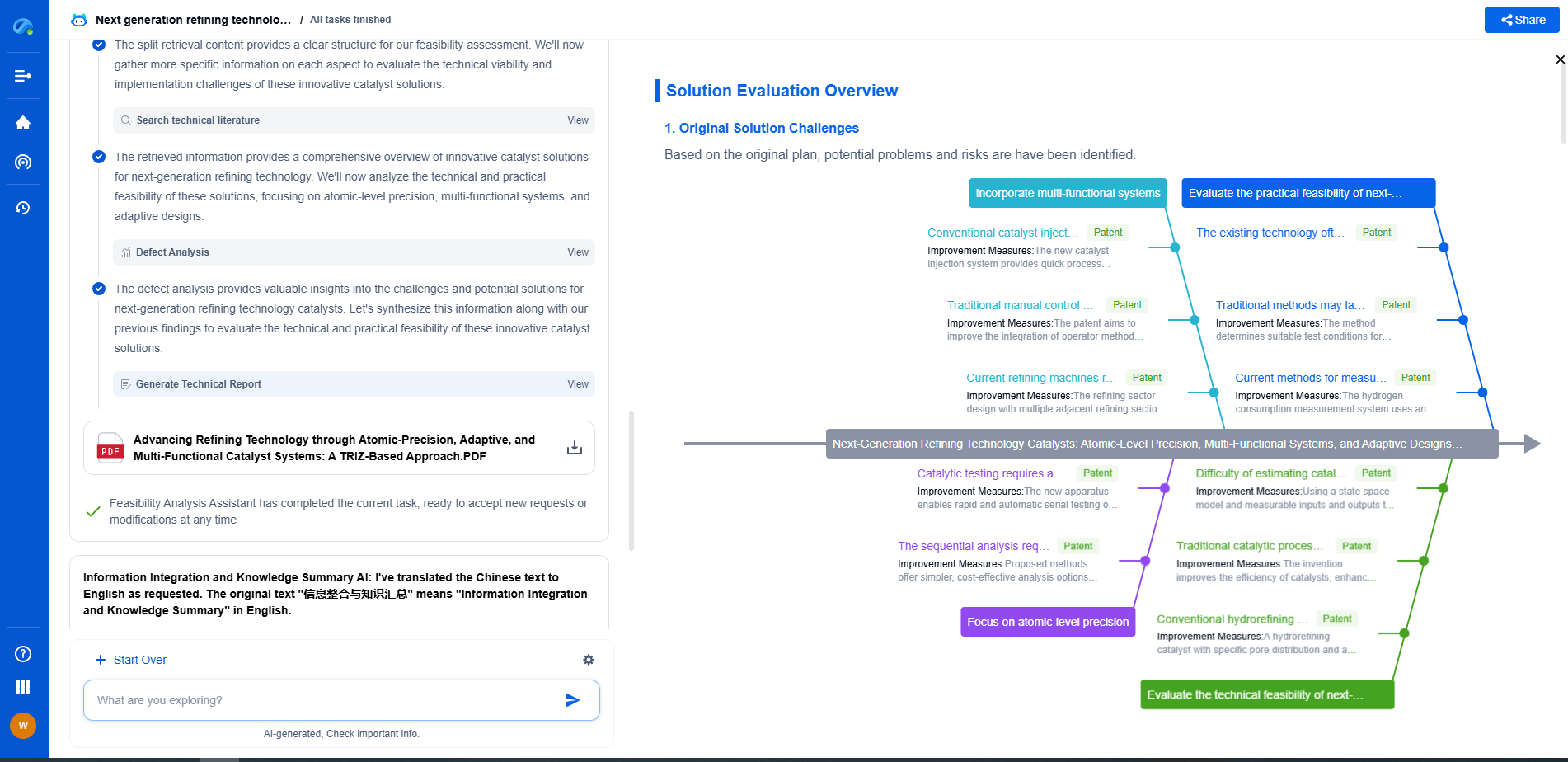What is a Battery Management System (BMS)? Key Functions Explained
JUN 26, 2025 |
In today's technologically driven world, batteries power an extensive range of devices from smartphones to electric vehicles. To ensure these batteries operate safely, efficiently, and with longevity, a Battery Management System (BMS) is essential. But what exactly is a BMS, and what are its key functions? This article delves into the intricacies of a Battery Management System, highlighting its crucial roles and significance.
What is a Battery Management System?
A Battery Management System (BMS) is an electronic system that manages a rechargeable battery, such as one found in an electric vehicle or a large solar power station. The primary role of a BMS is to monitor the battery's state, calculate data, report that data, control the environment, and protect the battery from damage.
Key Functions of a Battery Management System
1. Monitoring Battery Health
One of the most critical functions of a BMS is monitoring the health of the battery. This involves keeping track of various battery parameters such as voltage, current, and temperature. By continuously monitoring these factors, the BMS can provide real-time insights into the battery's condition, ensuring it remains within safe operational limits and helping to predict potential failures.
2. Balancing Cell Voltage
In multi-cell battery systems, it is crucial that all cells operate at the same voltage level for optimal performance. Over time, individual cells can diverge in terms of voltage, which can lead to inefficiencies or even damage. A Battery Management System ensures that all cells are balanced by redistributing energy from higher voltage cells to lower voltage ones, thus maintaining uniformity and prolonging battery life.
3. Ensuring Safety
Safety is paramount when dealing with batteries, especially large ones. A BMS provides several layers of protection to prevent dangerous situations such as overcharging, over-discharging, and short circuits. By actively managing and controlling these aspects, a BMS prevents conditions that could lead to overheating, fire, or explosion.
4. Extending Battery Life
Batteries naturally degrade over time. However, a BMS can significantly extend a battery's lifespan by optimizing its usage. By regulating charge cycles and maintaining balanced cell voltages, a BMS reduces the stress on the battery, slowing down the degradation process. This not only saves money by reducing the need for frequent replacements but also contributes to environmental conservation.
5. State of Charge and State of Health Estimation
A BMS is responsible for estimating the State of Charge (SOC) and State of Health (SOH) of a battery. The SOC indicates the current energy available in the battery, while the SOH provides information on the overall health and remaining useful life. These estimates are essential for users to understand battery performance and plan usage accordingly.
6. Communication and Reporting
Modern BMS units often come equipped with communication capabilities, allowing them to interface with other systems or devices. This function enables data exchange, providing users and systems with real-time battery status updates. Effective communication also aids in diagnostic processes and helps in predictive maintenance.
The Importance of a Battery Management System in Electric Vehicles
In electric vehicles (EVs), the BMS plays a pivotal role. It not only ensures the safety and efficiency of the vehicle's battery pack but also contributes to optimal vehicle performance. The BMS in EVs is responsible for maximizing driving range, providing accurate remaining mileage predictions, and ensuring quick and safe charging. As the demand for electric vehicles continues to rise, the importance of a robust and efficient BMS cannot be overstated.
Conclusion
A Battery Management System is vital for the safe, efficient, and long-lasting operation of batteries. By performing essential functions such as monitoring, balancing, protecting, and communicating, a BMS ensures that batteries function optimally across various applications. As technology continues to advance and our reliance on battery-powered devices grows, the significance of sophisticated BMS technology will only increase, underscoring its critical role in the future of energy management.
Stay Ahead in Power Systems Innovation
From intelligent microgrids and energy storage integration to dynamic load balancing and DC-DC converter optimization, the power supply systems domain is rapidly evolving to meet the demands of electrification, decarbonization, and energy resilience.
In such a high-stakes environment, how can your R&D and patent strategy keep up?
Patsnap Eureka, our intelligent AI assistant built for R&D professionals in high-tech sectors, empowers you with real-time expert-level analysis, technology roadmap exploration, and strategic mapping of core patents—all within a seamless, user-friendly interface.
👉 Experience how Patsnap Eureka can supercharge your workflow in power systems R&D and IP analysis. Request a live demo or start your trial today.
- R&D
- Intellectual Property
- Life Sciences
- Materials
- Tech Scout
- Unparalleled Data Quality
- Higher Quality Content
- 60% Fewer Hallucinations
Browse by: Latest US Patents, China's latest patents, Technical Efficacy Thesaurus, Application Domain, Technology Topic, Popular Technical Reports.
© 2025 PatSnap. All rights reserved.Legal|Privacy policy|Modern Slavery Act Transparency Statement|Sitemap|About US| Contact US: help@patsnap.com

